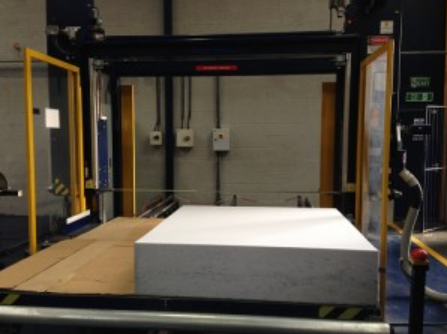Foam Conversion: Transforming Materials into Acoustic Solutions
1. Introduction: Understanding Foam Conversion
In today’s advanced manufacturing and acoustic industries, foam conversion plays a critical role in shaping materials to meet the specific demands of various sectors. Foam, a lightweight and versatile material, is not just cut and shaped—it’s engineered for performance, efficiency, and custom-fit functionality. Whether it’s reducing engine noise in a yacht, insulating HVAC systems, or optimizing sound quality in a recording studio, foam conversion enables the creation of bespoke acoustics that solve real-world challenges.
This article explores the processes, applications, and industry benefits of foam conversion, with insights from industry leader Acoustafoam, a UK-based pioneer in tailored acoustic and insulation solutions.
2. What Is Foam Conversion?
Foam conversion refers to the transformation of raw foam materials—such as polyurethane, polystyrene, or polyethylene—into customized shapes, sizes, and structures to meet particular applications. It’s a process that combines creativity, precision, and engineering.
At its core, foam conversion involves:
- Cutting (using CNC profiling, water jets, band saws, or die cut presses),
- Shaping (via moulding or slitting),
- Laminating (to enhance performance through bonding layers),
- And fabricating (to assemble finished parts or components).
Through these techniques, a simple foam block is converted into high-performance solutions such as acoustic panels, insulation pads, protective packaging, and more.
See also: How Is Generative AI Changing Business
3. Acoustafoam’s Capabilities: Equipment and Expertise
Acoustafoam’s in-house facilities are equipped with a wide range of specialized machinery including:
- CNC Profiling Machines
- Band Saws and Slitters
- Profiled Slitters
- Die Cut Presses
- Water Jets
- Spray Booths
- Laminators
These technologies allow the team to convert standard foam into high-performance technical products. From initial design to prototype sampling and final delivery, Acoustafoam combines 40+ years of experience with ISO 9001:2015 certified processes to deliver excellence across industries.
4. Foam Types and Their Uses
Each foam material has unique characteristics that make it suitable for specific applications:
- Polyurethane Foam: Flexible and cushioning; ideal for seating, bedding, and insulation.
- Polystyrene Foam: Rigid and lightweight; used in packaging and construction.
- Polyethylene Foam: Durable and moisture-resistant; often used in protective packaging and medical supports.
Acoustafoam uses these and other materials to produce customized solutions for a wide array of sectors.
5. Applications of Foam Conversion
Foam conversion serves numerous sectors by offering tailored solutions for soundproofing, insulation, and protection. Key applications include:
a) Automotive
Custom-cut foam is used in headrests, armrests, dashboard insulation, and door trims to enhance passenger comfort and reduce engine noise.
b) Marine & Boats
Acoustafoam’s bespoke acoustics solutions protect passengers from engine noise and thermal interference, particularly in engine compartments of yachts and marine vessels.
c) Medical
Converted foam products include orthopaedic supports, wheelchair cushions, and medical-grade padding—each developed to strict hygiene and safety standards.
d) Construction and HVAC
From managing reverberation in construction vehicles to providing thermal insulation for HVAC systems, foam conversion addresses a wide range of technical challenges in construction.
e) Industrial Acoustics
In noisy manufacturing environments, foam panels help reduce machinery noise, improving workplace safety and productivity.
f) Public Transport & Rail
Foam is used to create bespoke insulation and noise reduction solutions in buses, trains, and trams.
6. Bespoke Acoustics: More Than Just Soundproofing
Bespoke acoustics is the art of creating custom-designed acoustic treatments that solve unique problems. Unlike generic soundproofing solutions, bespoke acoustics are tailored to the exact dimensions, frequency requirements, and aesthetic needs of a space or product.
With expert foam conversion, Acoustafoam can:
- Create enclosures that dampen sound without blocking airflow,
- Tailor materials to absorb specific frequency ranges,
- Customize acoustic panels for visual design integration in studios or public spaces.
Whether it’s a recording booth, an open-plan office, or industrial machinery, bespoke acoustics ensure maximum effectiveness and minimal intrusion.
7. Innovation Meets Sustainability
Foam conversion isn’t just about functionality—it’s also about responsibility. Acoustafoam incorporates environmentally friendly processes wherever possible. This includes using recycled materials, minimizing waste during cutting, and adhering to sustainable sourcing standards.
In industries increasingly focused on sustainability, having the option to choose eco-conscious bespoke acoustics is a competitive advantage.
8. Benefits of Foam Conversion
Here are the key advantages businesses and manufacturers gain from foam conversion:
- Tailored Fit: Each solution is crafted to precise specifications.
- Noise Reduction: Effective for mid to high frequencies—ideal for reducing echo and reverberation.
- Thermal Insulation: Keeps environments temperature-stable, especially in engine and HVAC settings.
- Lightweight: Foam materials offer superior performance without adding unnecessary weight.
- Rapid Prototyping: Quick turnaround from design to functional sample.
- Cost-Effective: High-quality results without the expense of heavy industrial soundproofing alternatives.
9. Customer-Centric Services
Acoustafoam’s commitment to customer satisfaction is reflected in their extensive support services. These include:
- Free consultations for foam conversion requirements,
- Product design and development tailored to your specific application,
- Acoustic testing to validate the material’s effectiveness,
- Sampling and prototyping, allowing clients to test before full-scale production.
They also provide expert guidance on the best foam types and conversion methods based on application, space, and environment.
10. What Clients Are Saying
Clients across sectors—from scientific labs to communication firms—praise Acoustafoam for their speed, service, and quality. For instance:
“Quoted 10 days, delivered in 2! Really helped us out on a deadline. Great product, great communication.”
— Vicky Pulman, TMC Strategic Communications
“Acoustafoam are quick to provide solutions for any situation and are very efficient with a rapid turnover time.”
— Chris Smout, The Studio People
These testimonials demonstrate the company’s dedication to exceeding expectations.
11. Conclusion: The Future of Foam Conversion
In a world where precision, customization, and performance are paramount, foam conversion has become a key player in modern engineering and design. Whether you’re seeking bespoke acoustics for your recording studio, marine vessel, medical equipment, or transport vehicle, Acoustafoam offers the perfect blend of technology, experience, and innovation.
The future of foam conversion lies in its ability to respond quickly to evolving needs, integrate eco-conscious solutions, and continue enhancing lives through sound management and insulation.
Need help with a specific acoustic challenge? Don’t hesitate to get in touch with Acoustafoam—where foam becomes function.






